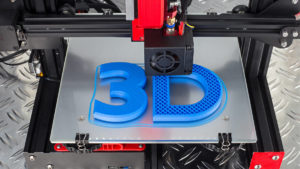This stock has snuck under the radar despite soaring an epic 10,000% since 2017

Pic: Yuichiro Chino / Moment via Getty Images
PPK Group’s (ASX:PPK) share price has jumped a massive 10,000% in the last five years.
You read that right – 10,000%.
The company branched out from mining services into the development of Boron Nitride Nanotubes (BNNT) in partnership with Deakin University around three years ago – and boy is it paying off.
The BNNT technology basically produces a ‘fibre’ 100 times stronger than steel but as light as carbon fibre, super flexible, more thermally conductive than copper, and able to sustain high temperatures of up to 1000 degrees without degrading.
PPK executive chairman Robin Levison says the company recognised early on that the applications from aviation, automotives and aerospace to ballistic armour, defence, electronics and beyond were going to be lucrative.
And clearly investors are on board.

“Our initial assessment of the technology was that it looked like it’d be really interesting for the mining sector, but as we really dug into our due diligence, we realised that if someone could manufacture BNNTs at high volume and high quality, that there were literally dozens of vertical markets that that product would improve,” Levison said.
“We’ve focused on the battery area which has massive markets such as EVs, drones, cell phones, anything that requires greater battery life, faster charging, more density, lighter batteries etc.
“And then the second obvious area for us was the ballistic alloy area where we see real advantages on being able to either strengthen or lighten – or both – materials that are used in aerospace and defence.”
Commercialisation and scaling up manufacturing
Right now, 1kg of the stuff sells for close to $1 million dollars or around $850 per gram because no one has been able to produce it in commercial quantities.
But Levison says the company can currently produce industrial scale volumes and plans to scale up.
“Over the last two and a half years, we’ve gone from manufacturing grams per week to announcing a few weeks ago that we’re now manufacturing a kilo per week, per shift – or 50kg a year per shift at the same high quality – which is absolutely critical,” he said.
“We can produce industrial scale volumes so that when someone does want to use it in a material way, we can produce it and provide the inventory they require.”
The next phase is increasing automation which he expects will result in not only a material increase in manufacturing capability but also a reduction in cost.
“Each time we have increased the automation and the size of the production module, the underlying cost per gram of BNNT has dropped significantly,” Levison said.
“So, what we’re seeing now is that with a lower cost of production and with our expected, further decrease in production cost and increased volume, there will be more potential industries who could use BNNT to enhance their products because of the reduction in the underlying cost.”
Li-S Energy’s lithium sulphur battery potential
Plus, PPK Group has a material stake in several different companies using BNNTs.
One is Li-S Energy, which plans to make lithium sulphur batteries a reality and pre-IPOd a few months ago at a valuation of $300 million.
“The lithium sulphur battery project is an example of PPK’s incubation and commercialisation skills, we entered into that project less than 24 months ago with Deakin when they had science that they believed that they’d perfected,” Levison said.
“We’ve added BNNT to the product and Li-S has then developed a second component called Li-S nanomesh, which again has improved the performance of the battery.”
The benefits of lithium sulphur batteries over lithium-ion batteries are that they are more energy dense, cleaner, and greener, but no one has been able to produce a product that’s stable enough or has a long life.
Until now.
“We believe we’ve produced a lithium sulphur battery that has the same, if not better, cycle life or lasting capability to a traditional lithium-ion battery but with all of the benefits of lithium sulphur battery being higher energy density, less degradation, not so many of the really negatively viewed rare materials that are needed in lithium-ion battery,” Levison said.
And before the end of the month, PPK expects Li-S Energy to IPO on the ASX with a market cap of around $600-700 million – which Levison says is proof of process.
“There are significant institutional investors who’ve got behind that opportunity, and we see it as one of many that will come out of PPK Group the parent company,” he said.
“What we’re hearing from our investor base is they really like the fact that we are keeping a material stake in each of these investments.
“So even when Li-S Energy lists on the ASX at $600-700 million market cap PPK will still own close to 50% of that business – which I think helps drive the underlying value of the PPK shareholding.”
Li-S Energy shares are expected to start trading on ASX in late August.
Material stakes in ballistics and aerospace applications
PPK also has a material stake (45%) in Craig International Ballistics too, which is a leading supplier of body armour to the Australian Defence Force and Police Forces.
“We felt that the nanotechnology that we were developing could potentially make those bullet resistant armour plates that the military and the police wear lighter and stronger,” Levison said.
“We basically pushed into different areas where we think that the cost of adding the BNNT outweigh the benefits that it brings to the underlying product.”
The company is also in a joint venture with Deakin and Amaero Alloys, a subsidiary of Amaero International Limited, to develop a super strength aluminium alloy with BNNTs.
PPK holds a 45% stake and is quietly confident of the outlook for the project, especially considering Amaero makes alloys for Boeing and has a supply chain development collaboration with Rio Tinto for its alloy which – once commercialised – will also be used in conjunction with BNNTs under the joint venture.
Added to that, PPK also has a strategic 20% stake in Advanced Mobility Analytics Group Pty Ltd, an artificial intelligence SaaS product that’s basically a traffic management safety system that can even predict accidents.
And that’s not all.
The company is also working on commercial manufacturing plans for its ~60% owned subsidiary, White Graphene Ltd, which is currently assembling its initial production module prior to commissioning for full scale production in Q1 CY22.
White Graphene is also known as Boron Nitride Nanosheets, flat 2D sheets with microscopic thickness and shares many properties of BNNT such as high strength, thermal stability up to 900 deg C, excellent thermal conductivity, electrical insulation, and radiation shielding.
UNLOCK INSIGHTS
Discover the untold stories of emerging ASX stocks.
Daily news and expert analysis, it's free to subscribe.
By proceeding, you confirm you understand that we handle personal information in accordance with our Privacy Policy.








